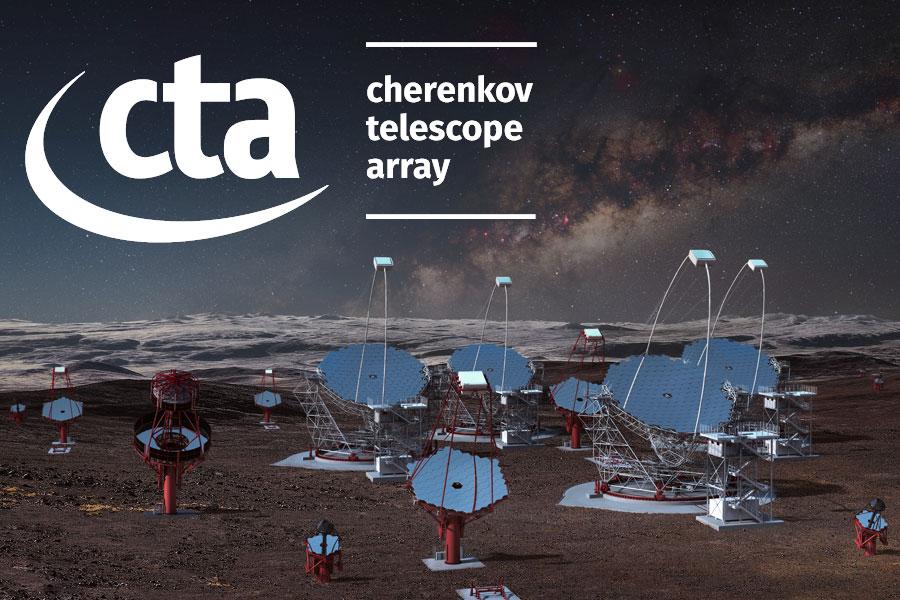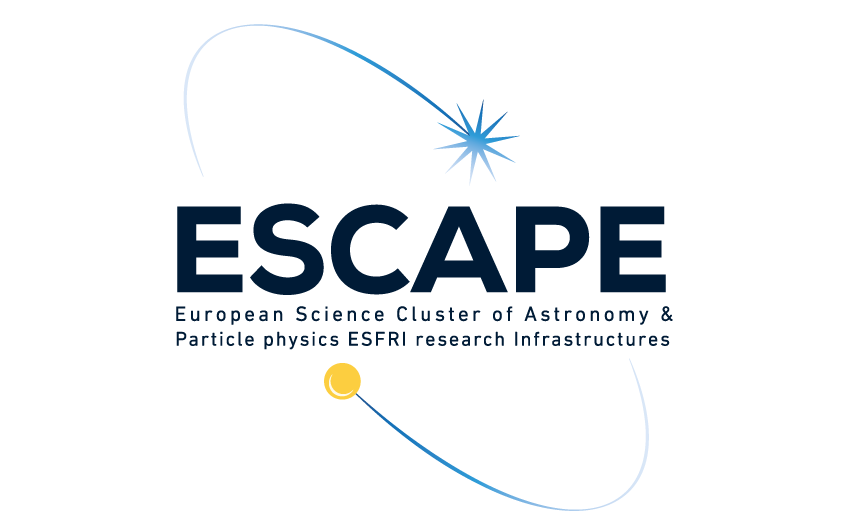

Cosmic rays are energetic particles that constantly rain down on the Earth’s atmosphere. In the most extreme cosmic sources, they interact with other particles and magnetic or photon fields, giving rise to the most energetic light: gamma rays. Unlike cosmic rays, gamma rays are not affected by the magnetic fields of the Universe as they travel toward Earth, which allows us to observe and study the sources that produce them in depth. When the gamma rays reach the Earth’s atmosphere, they interact with it, producing cascades of subatomic particles. These particles are so energetic that they can move faster than light in the air, which produces a very fast flash of bluish light called Cherenkov light. Observing this light, scientists can obtain information about the primary gamma ray. This is the so-called Cherenkov technique that will be applied by the Cherenkov Telescope Array (CTA) with an unprecedented precision.
The Cherenkov Telescope Array (CTA) Observatory is a global initiative to build the next generation ground-based gamma-ray instrument, consisting of tens of telescopes on two sites: one array located in the northern hemisphere at the Roque de los Muchachos Observatory (La Palma, Spain), which will emphasise the study of extragalactic objects at the lowest end of CTA’s energy range, and another larger array in the southern hemisphere near the Paranal Observatory in the Atacama Desert (Chile) that will cover the full CTA energy range and concentrate on galactic sources. CTA will have unprecedented sensitivity and accuracy in its detection, becoming the largest gamma-ray ground-based observatory in the world, with the capability to address key questions in and beyond astrophysics, such as the understanding of the origin and role of relativistic cosmic particles, probing extreme environments and exploring the frontiers of physics.
CTA will provide the worldwide astronomical and particle physics communities with a resource for data from unique, high-energy astronomical observations, as well as software and services for accessing, analysing and combining these data, thanks to FAIR principles
As an open gamma-ray observatory, CTA will provide scientists with access to data that will allow them to combine it with that of research infrastructures at other wavelengths to perform multi-messenger astronomy analysis. However, there is a wide range of issues that are at the core of being an open observatory: managing and processing large amounts of data, providing the world-wide user community open access to a large variety of high-quality science data products and software with flexible workflows for their analysis.
Seamless ESCAPE services to cross the boundaries of the multi-messenger era
The ESCAPE EOSC cell is composed of services that provide common innovative solutions for the management, curation and deposition of data for the data-driven science economy, while ensuring global open access and long-term usability. These services will help CTA reach a world-wide user community and to support open science workflows.
CTA is expected to generate approximately 100 petabytes of raw data in the first five years of operation (15 petabytes of processed data). The data will be distributed across multiple CTA computing centres around the world, where they are archived and processed. The ESCAPE DIOS (Data Infrastructure for Open Science) will provide a federated data lake infrastructure capable to manage these extremely large data volumes, helping CTA to gain expertise in federated data management and platform technologies.
In order for all these data to be analysed, software is the solution. CTA will use the common guidelines and standards developed within the ESCAPE OSSR (Open-source scientific Software and Service Repository) to improve the quality, usability and accessibility of its data and software products. On the other hand, the ESCAPE OSSR will support CTA in sharing analysis software in a sustainable repository that will enable open science and provide users access to a wide range of multi-messenger software for mining open-access datasets, an important step at the advent of the multi-messenger era.
Besides analysing, users need to be able to interact with their own data. ESCAPE and CTA will work together towards the creation of a platform and tools to overcome the challenges of making large data sets accessible to a wide user group. The ESCAPE ESAP (ESFRI Science Analysis Platform) will enable science users to discover a wide range of software tools and data and to perform multi-messenger analyses of CTA data in combination with those of other research infrastructures. It will also enable science users to create novel workflows for the analysis of CTA data and share them with the scientific community.
Besides archiving, processing and analysing data, this data needs to be easily accessible for the users. Becoming operational as an open observatory at the advent of the multi-messenger era means CTA will put special focus on topics such as interoperability, the FAIR principles and state-of-the-art approaches to software and services. The ESCAPE VO (Virtual Observatory), which follows VO standards for data interoperability and has common approaches for the provenance of data and services, will make CTA accessible to the science community.
Common approaches to overcome data management challenges
One of ESCAPE’s greatest values is that it provides a forum with other research infrastructures and in connection to the Virtual Observatory for the discussion and development of common approaches to data and software sharing, analysis and data processing workflows and their interoperability. The solutions and services developed within ESCAPE may provide CTA with the tools to reach a world-wide user community and to support open science workflow, which is especially important to enable this new and exciting era of multi-messenger astronomy.
Views
37,539

